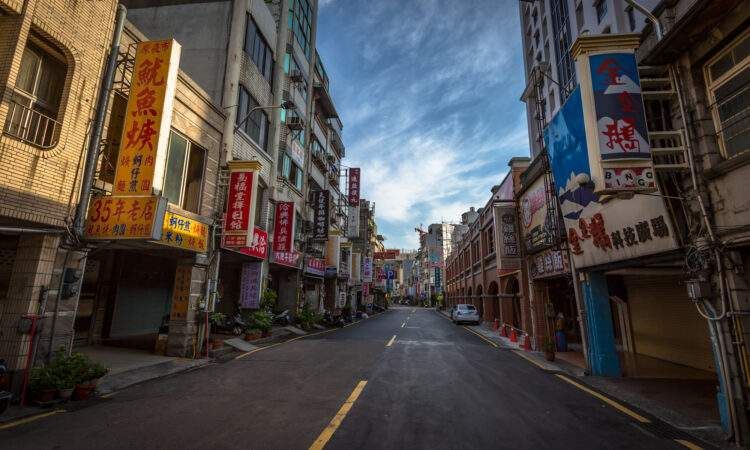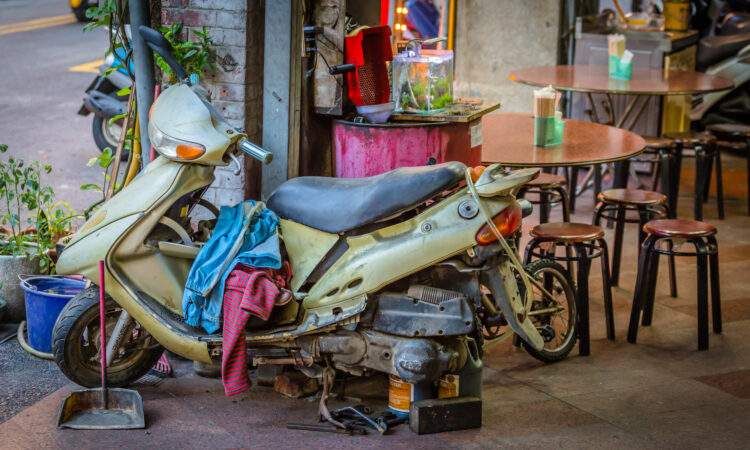L: What is your favorite time of a day on Beimen Street?
M: It’s hard to say because every time during the day looks very different. From the photographic point of view, the light is very important. I got a chance to stay in a hotel nearby and could go back really early in the morning before sunrise and also stay after sunset. The light was really gorgeous at those two times. It’s also very interesting at night because the street changes very quickly within only few hours. It turns very busy in the evening when everybody comes out to get food on the street. After only a couple hours, it will turn quiet again when the shops close.
L: What is your first impression to the street?
M: When I first came to this street, I came in from Beida Road. I saw this massive construction site and I was shocked. It actually hurts to see this and I just feel that I need to race the time to record the old street before everything is lost.
L: Why did you find it so shocking?
M: I guess it’s very different from where I am from. I am from Austria and a lot of buildings or landscape with history or significances are protected. I found that in a lot of places in Taiwan they build new things over old districts very quickly. They tore down the old buildings and seemed to regret and tried to build them back in a different location. But once it’s lost, it’s lost forever. The new ones are never the ‘authentic’ ones.
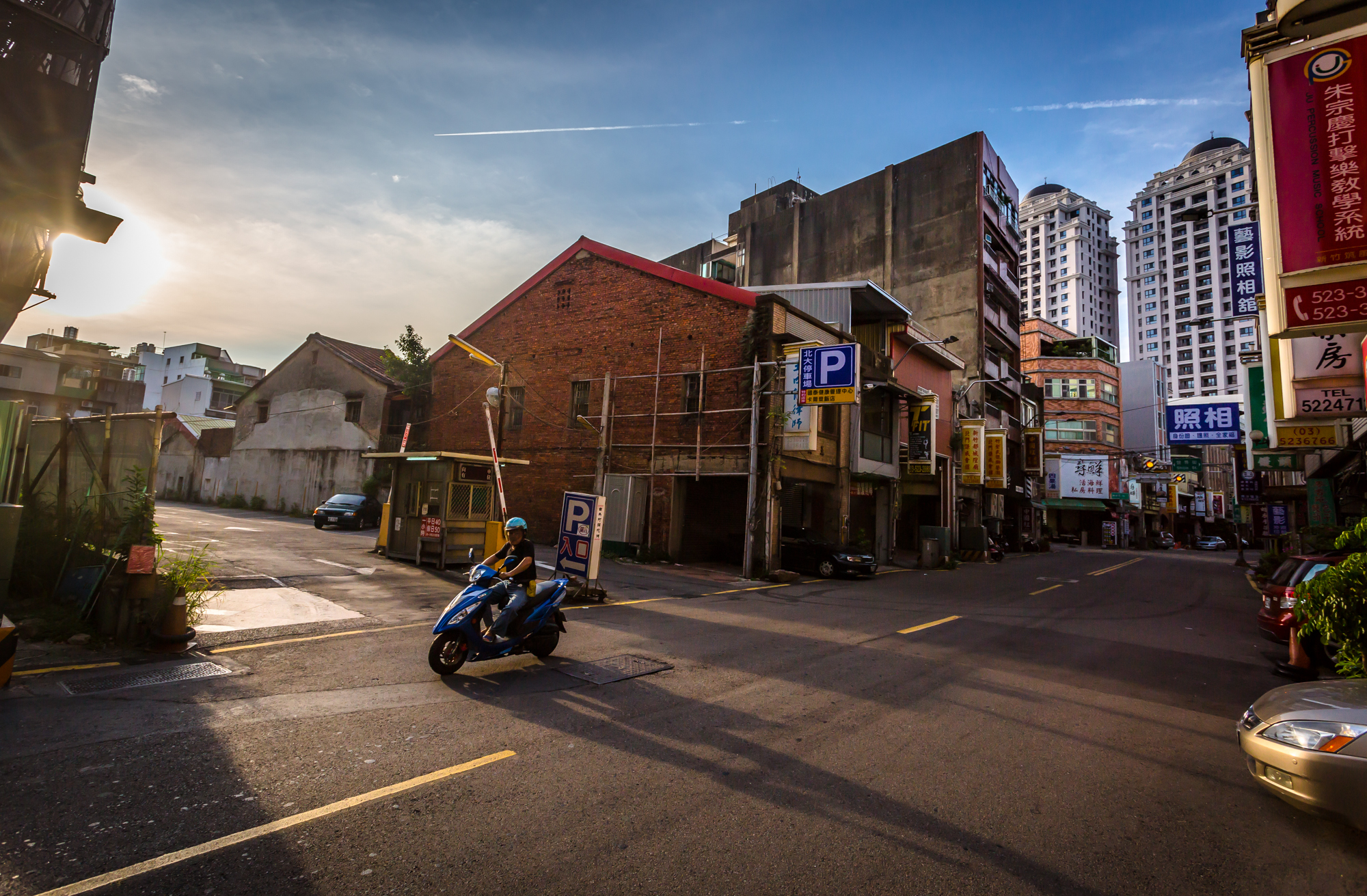
L: There is only less than one and a half month when you were commissioned to the development of this exhibition. How did you start with everything?
M: Well. I was originally given a task to record the process of this research project on Beimen Street and help to build an archive of images. Just in the middle of June, this whole idea turned into an exhibition. For me, I actually wanted to have more time to spend in the area, to go back for more times during different times, months, or even different seasons of the year; that I could get more in-depth about the street. We didn’t have that. I had to squeeze everything in a short period and it has a good side and a bad side. I think it’s good in a way that I could take the first glance of the area. I just hope that I have enough good works to show everyone a different view or different angle to see the street. As a foreigner in this country, I probably see things differently from people who live here everyday. I would like to show something that inspires me to the local people and hope they could be thinking or rethinking about their everyday life in a different way.
L: What does this project mean to you as a photographer?
M: First, I saw some constructions going on there on the street and was thinking that a lot of old things could be lost very soon. It is important that I can try to record something; especially how people live there lives and run business on the street now; and help to build an archive at B.S. House & Heritage. Then, I tried to capture the atmosphere of the street in different times of a day. Despite it’s an old street, you can see that it’s still the core of the city. I took photos of wider scenes as well as details or small things like the architectural decorations and wooden beams that are very likely to disappear with the destruction if nothing is done. For me, I think I am documenting the entire street. There may be a lot of things that people see or walk by everyday, but they just don’t ‘realize’ that they’re ‘there.’ Also, I’m showing the photos in different lights and different times of a day when there could be no people around. I guess a lot of people have probably never seen the street at those different moments.
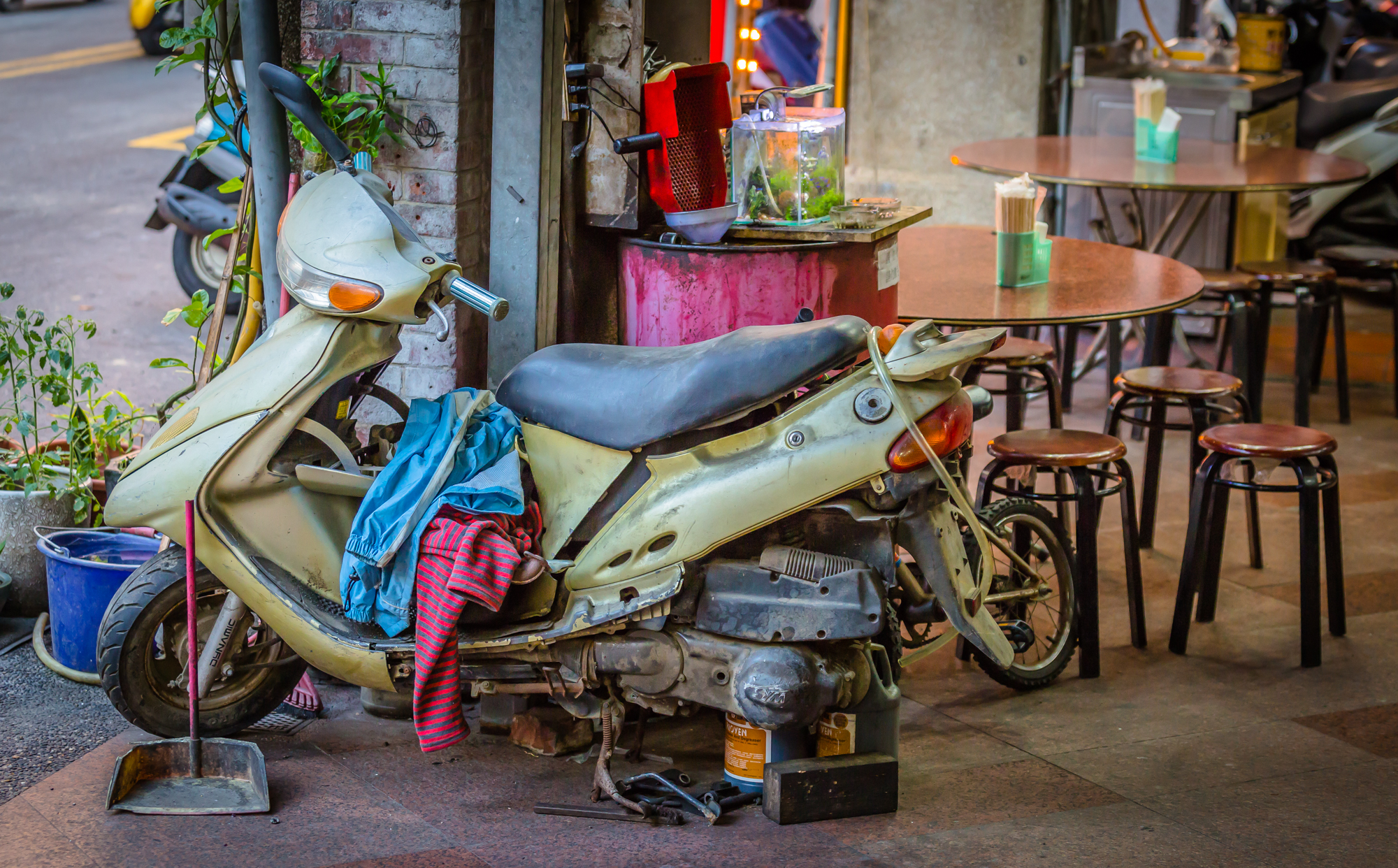
L: You’re actually a filmmaker yourself. Most of the time, you’re telling stories in moving pictures. However, it’s more like asking you to tell how you feel about the street in ‘frozen’ pictures this time. How do you find it different using photography as a medium of expressing yourself from filmmaking?
M: It is basically taking filmmaking and refining it into an even more compressed frame. You need to have an interesting moment in there. In filmmaking, you can have a couple of seconds of even longer to show much more of it. You can show an interesting scene in actions, but you can never freeze that one moment. It is like compressing five to ten seconds of film into one frame and making sure that you capture the very essence of one scene. One side, you need to be patient because you need to wait for that moment. On the other side, you need to be quick because if the moment is there you need to be ready. This is different from filmmaking when you can roll the whole thing and retry it again and again.
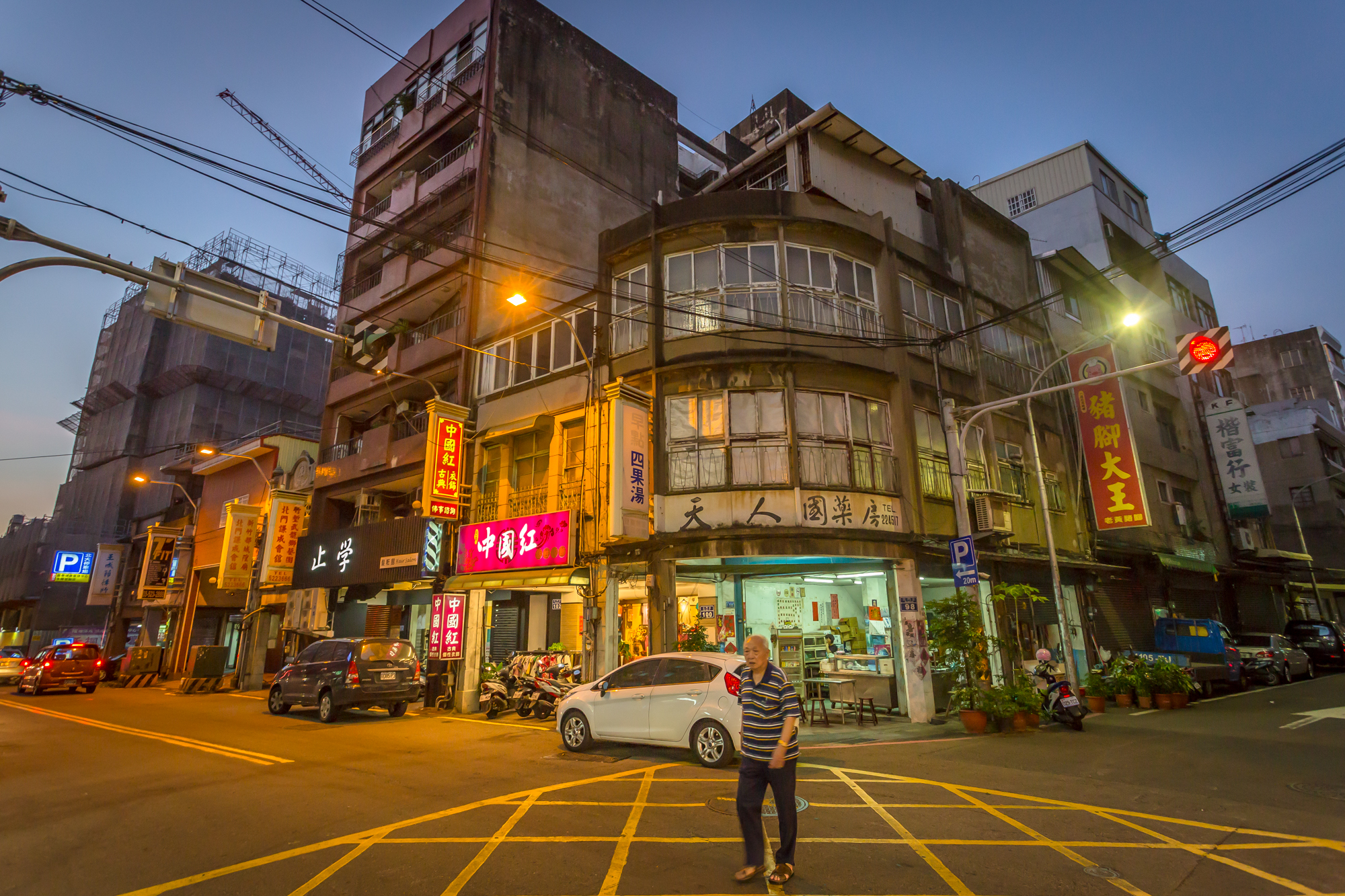
L: I found it interesting that there are a few photos we both selected for the exhibition, but the reason I picked them does not really echo the reason why you took the photos. What fascinates me in the process of putting the exhibition together is to try to get rid of the common knowledge I already have in mind about this specific street and put myself in your shoes to follow your steps on the street. I wait for some circumstances to catch my eyes and they are mostly due to our different perceptions toward the same images.
M: There are a few photos that I took on purpose to focus on specific things. For most of them, I saw a scene for stories. I don’t just take a photo out of one reason. I usually take it with several reasons in there and try to compose it in a way that no matter where you start looking at in the photo you can realize that there are other things around it. Where you start is just a lead that’s dragging you around to discover more into the story. I sometimes do the opposite. Instead of composing a scene to tell something, I focus on only one thing. If you combine this kind of photos, it could provide a different experience looking into a certain place.
L: I noticed that there are a lot of photos of signs or banners with Chinese words and phrases on them. With very limited Chinese capacity as I know, how do you ‘read’ or how do you perceive these messages?
M: Well, there is always something that catches my interest in different ways. It is the light. It is the old style handwriting. It’s the aesthetic of the whole thing. I can read some characters and am able to catch some meanings. Sometimes it’s an irony in it. Sometimes it’s the family name of the house. For example this photo, it says ‘Huang(黃)’ and there is a yellow sign on top of it. It feels like an irony to me.
L: This is exactly why I’m so curious about how you read the signs. That yellow sign you just mentioned is actually nothing to do with the family name of the building. It is a Daoist incantation for Fengshui. This kind of different perceptions to a single sign is like the game of decoding and we obviously decode it in a different way. What about this photo with the street signs?
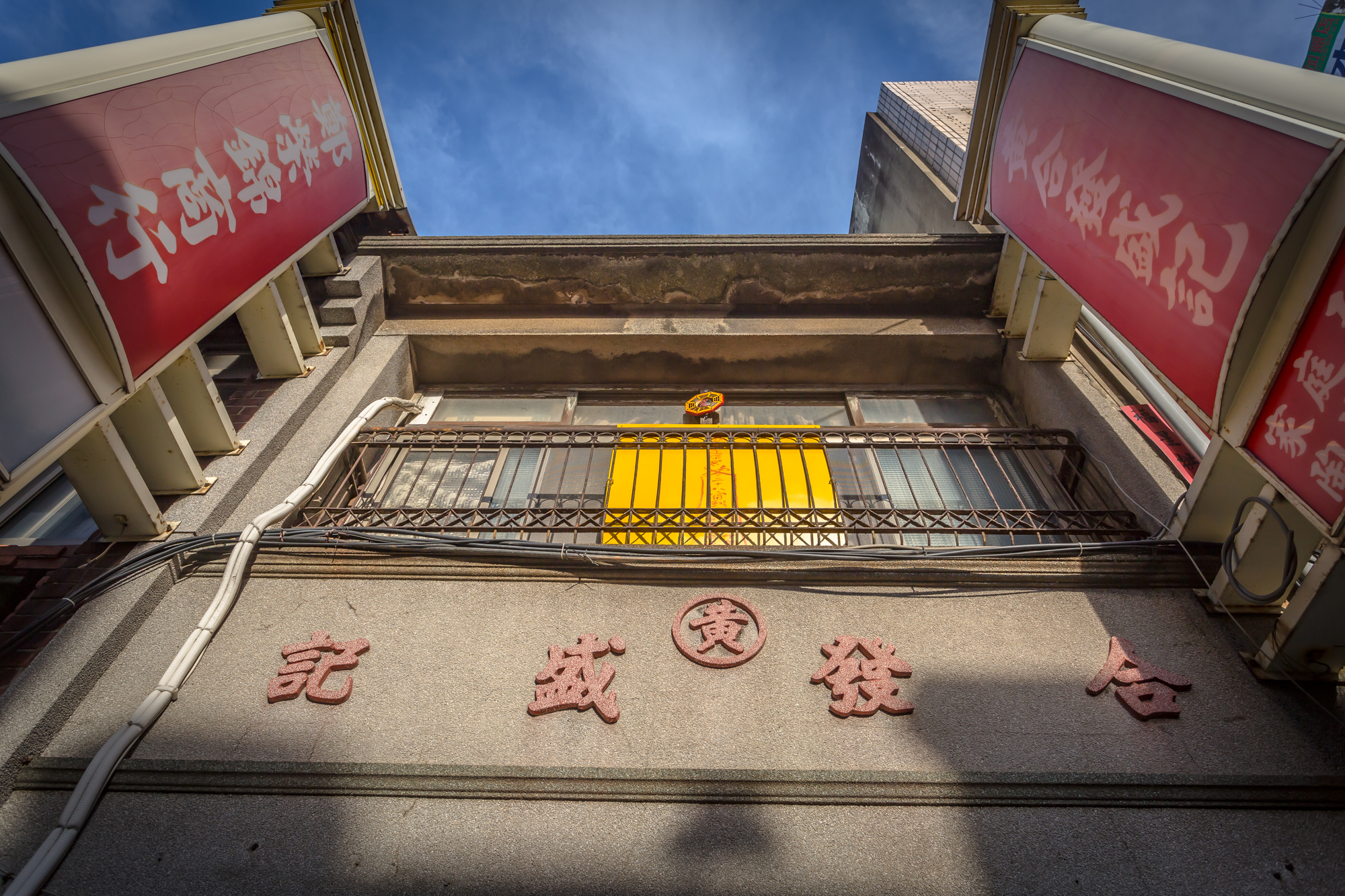
M: These two street signs sort of cross each other. What I think is interesting is the new stickers on one of them. I was thinking that they probably have changed the name. On this other sign of Beimen Street, you can see an arrow pointing into the sky. It feels like if you follow the arrow, it will take you to the sky.
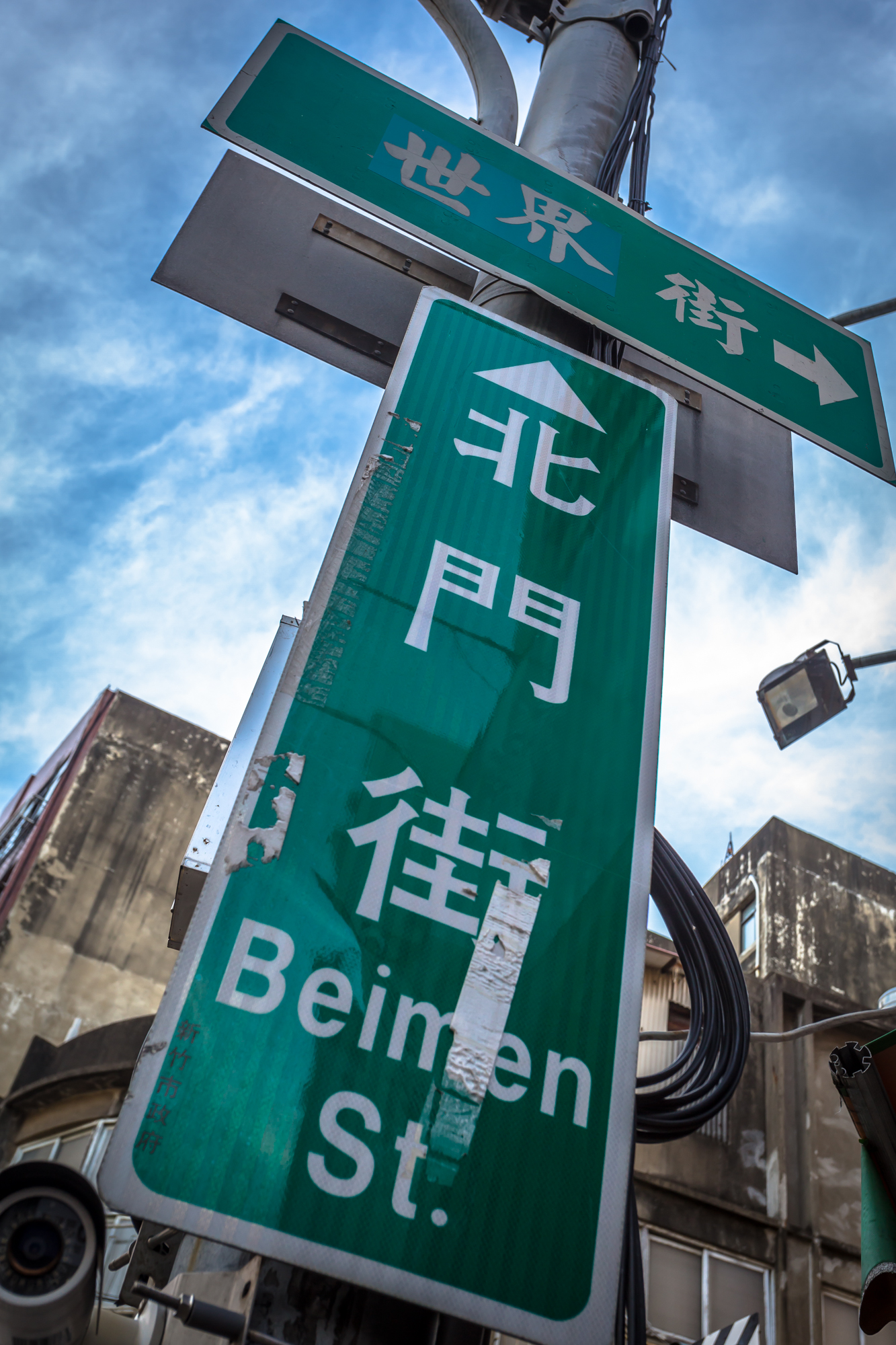
L: You know what interests me in the photo? The CCTV… This camera is like a hint to the title of our exhibition saying that someone is ‘gazing’ you on the street. In addition to our different ways of perceiving the messages on the signs or banners on the street, one other thing I found interesting is the angle you took the photo. You are 1.95 meters high which is much taller than most of people in Taiwan. I have looked at the street probably tens of times since I moved here, but I have never ever seen the street from ‘this height.’ This is definitely the angle of the street that most of us in Taiwan can’t see until you took the photos. For example in this photo of the empty street, I can see that it’s taken from a really ‘unusual’ angle. It’s because of your height. Also, I had never noticed this store with the sign saying ‘Golden Penguin’ until I saw this photo.
M: I actually noticed it the first time I walked on this street. This photo was taken at dawn when there’s no one and no traffic at around. The street was empty and you feel like you’ll be drawn into the hole in the end of the road. This photo is only possible at this point in time during the day, otherwise you would be run over by cars later when everyone’s out onto the busy street.
L: When I see some of these photos that are obviously taken from your 1.95-meter angle. I wanted to ask ‘how is the weather up there?’. You can probably see the details of the buildings better than us since you’re much closer to the ceiling.
M: I noticed that a lot of people only look down when they walk. They don’t look up and they miss a lot of beautiful things. It’s also good showing the people some of the details they have probably ignored everyday. The beautiful wooden beams, architectural decoration, and so on…
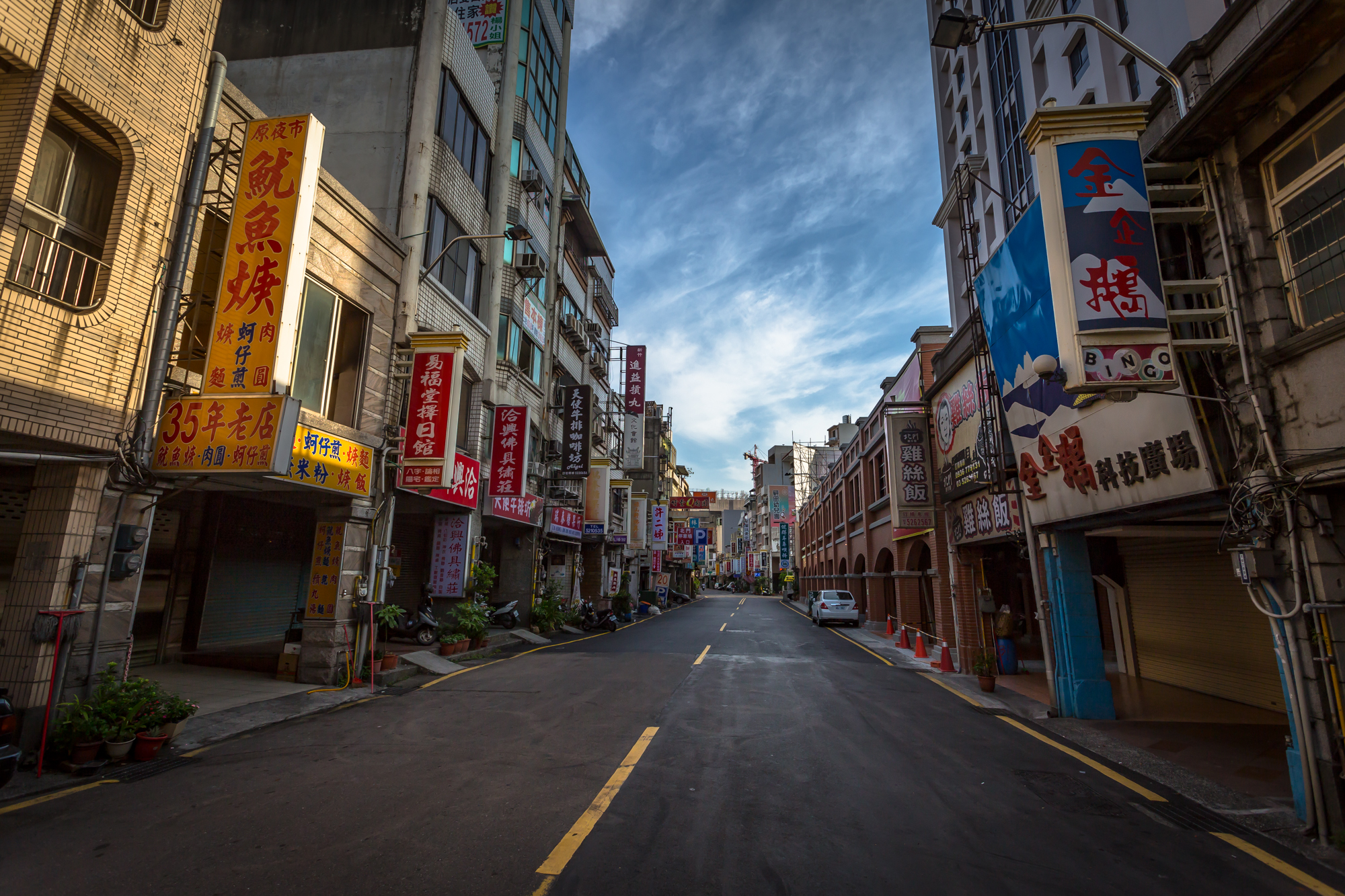
L: This is another one I like a lot. I guess you took this photo because of the colours of the shops in it. Right?
M: Yeah, that is one reason. Also I took this photo because of all these banners and the electronic sign.
L: This is actually a lottery kiosk. What it says on the electronic sign is actually telling people that someone has won the biggest prize here.
M: I didn’t know that. So it also means that the temple behind is really blessing…
L: Yes, exactly.
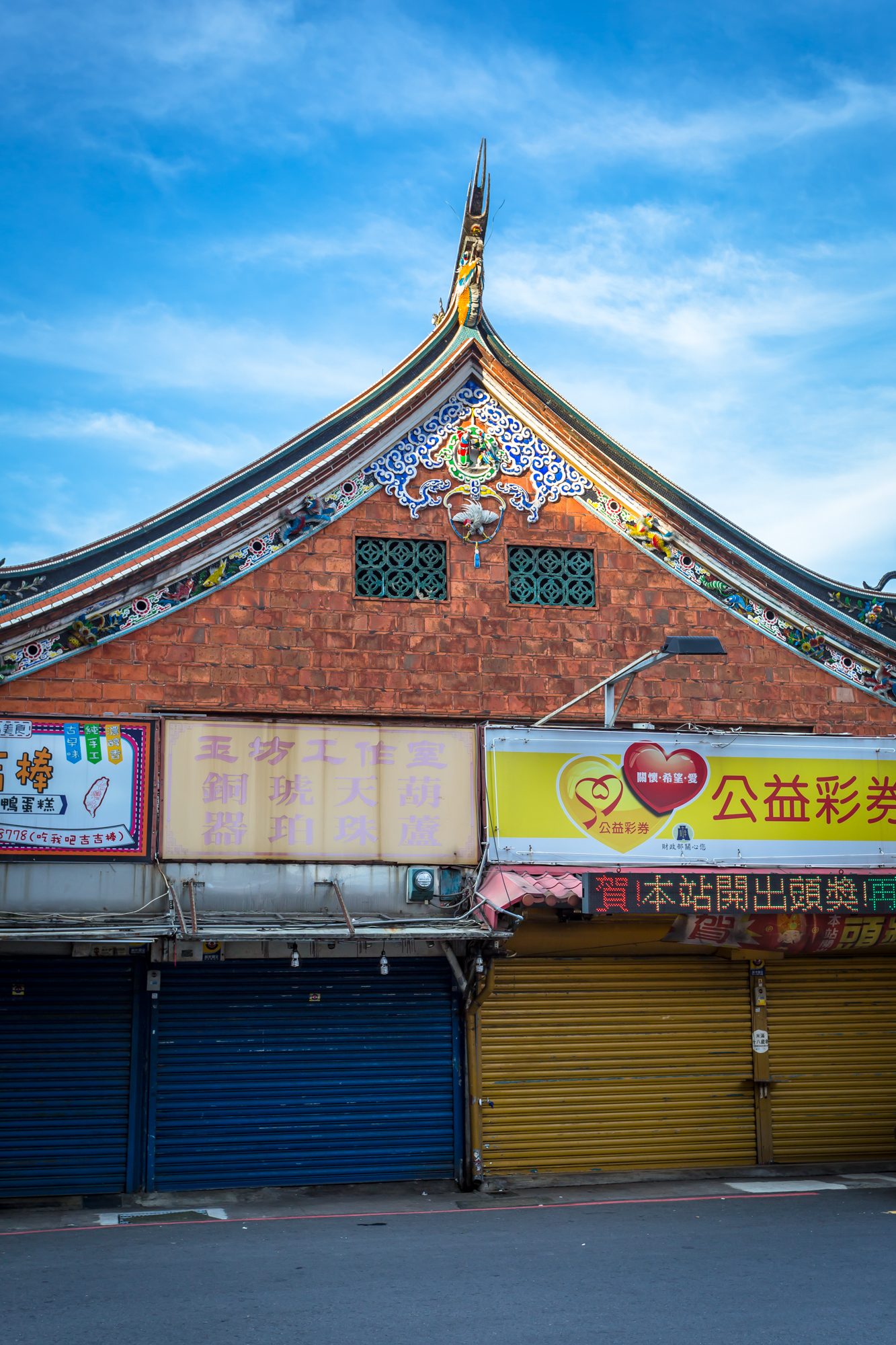
L: What about this one with only one Chinese character on it?
M: I actually like this one a lot. I understand this character. It’s Gold(金). I took a photo of it because it feels like it’s saying that this place was once glorious as gold, but now the gold is crying (with the rain stain underneath). It’s like the place is fading.
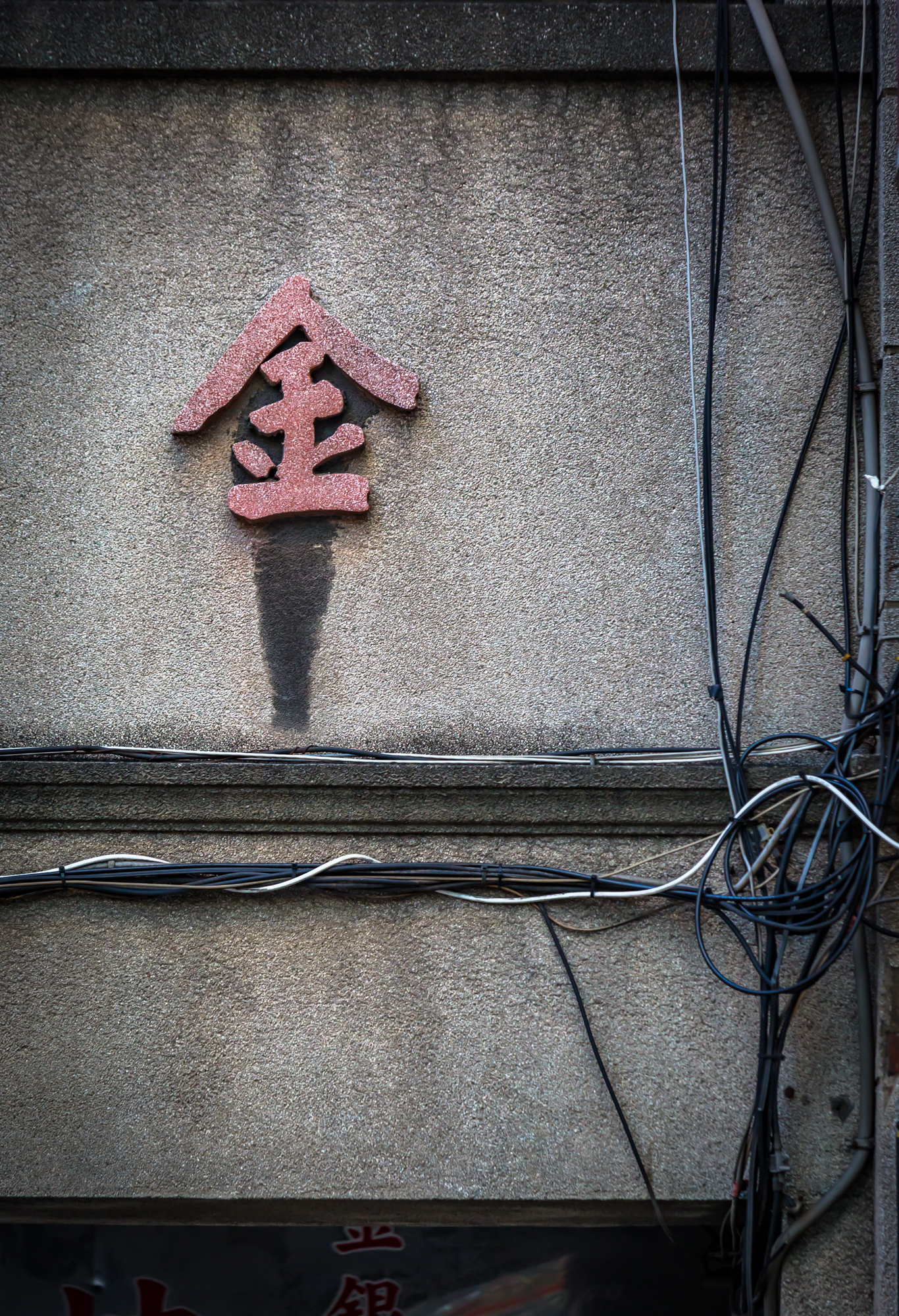
L: Here is another interesting one I selected from your works.
M: I took this one because it’s kind of interesting to see the facture of two buildings. The building on the left is a new apartment and the one on the right is an old building.
L: This one on the left was originally connected to the one on the right. They were built together as shops in the Qing Dynasty. The reason I selected it was because this small alley between the two buildings looks just like one of the several ancient alleys in the city left from the Qing Dynasty. However, it’s kind of irony that it became a sort of historical gap between the two buildings.
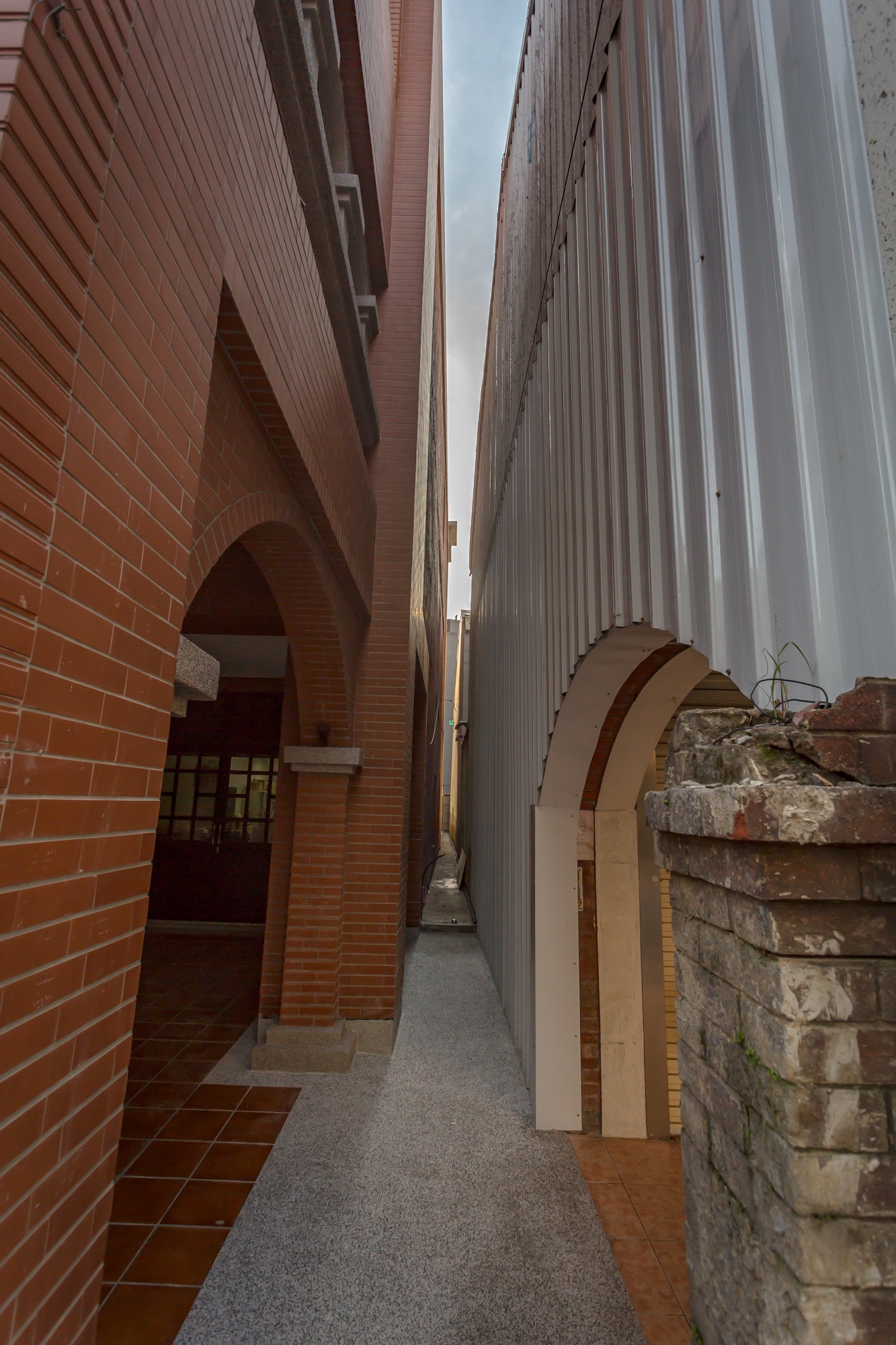
L: As a photographer, you’re most of the time the person gazing at someone. In some of the photos, I see you turning into the target ‘being gazed.’ How do you feel about it?
M: Well. As a foreign looking person in Taiwan, I’m very used to being stared at by people, but it gets worse when I have a camera with me. It’s also because that I am a really big guy. People get scared of me sometimes. That’s why I usually take photos of landscapes. The landscapes don’t get scared of me. I don’t do street photos very often, but I’m trying to do it more. I’m not that kind of person who walks up right into the face of people and takes photos of them. Instead, I always try to hide myself somewhere at the corner or behind the pillars. I don’t want to interfere what people are doing. The first time I walked down with the big camera on the street, people were more curious about what I’m doing there. A good way to hide yourself is to be long enough around them. After coming back and forth for many times, some people start getting used to you and ignore what you’re doing. And then you just wait there for the right moment.
L: The reason I asked you this question was because of the book, The Tourist’s Gaze. It says that when the tourists gaze at the local people of an attraction, they somehow also become the target being gazed by the local people. There is a strange scene coming up in my mind now when I try to imagine you taking photos on Beimen Street. You mentioned that you always get stared by people in Taiwan for being a big white guy. Now you have your camera in hands to take photos of people as if you’re taking revenge on the people.
M: Yeah. It’s like you’re originally a zoo animal getting stared at and all of a sudden you take out your camera and the position of being gazed just reverse in a second.

